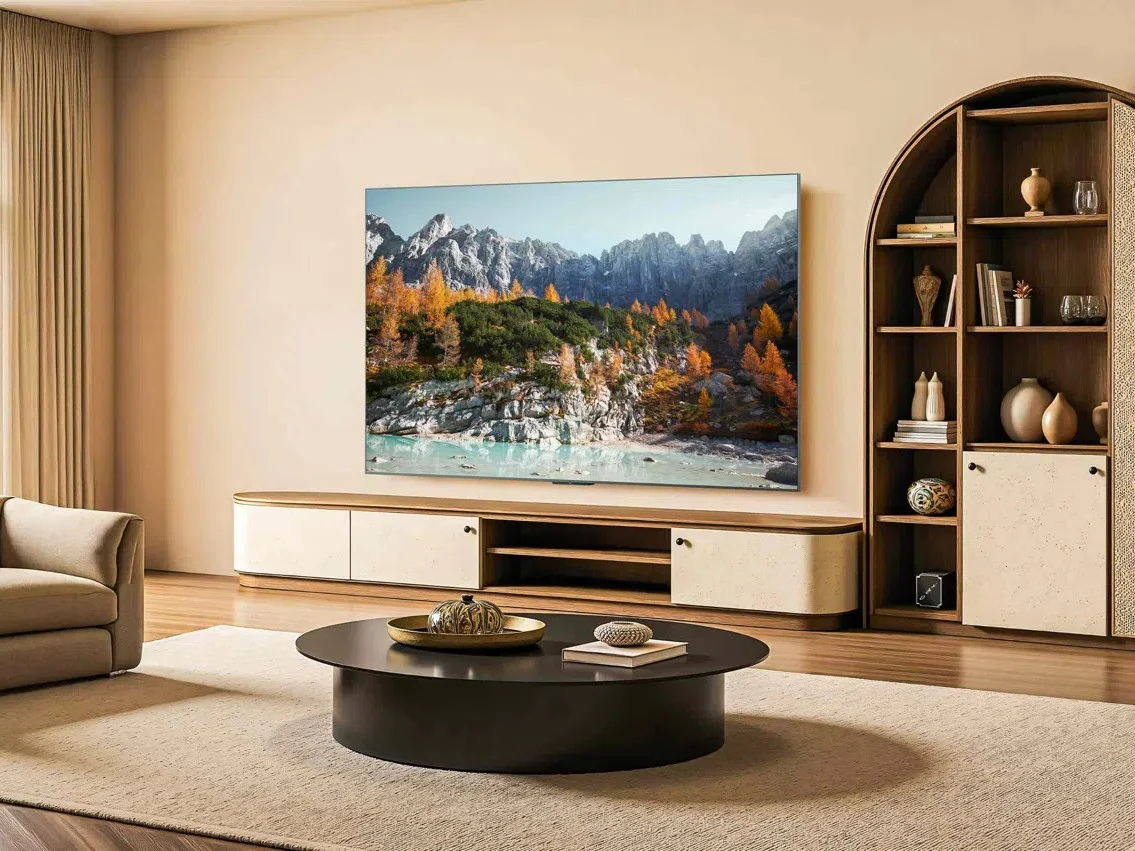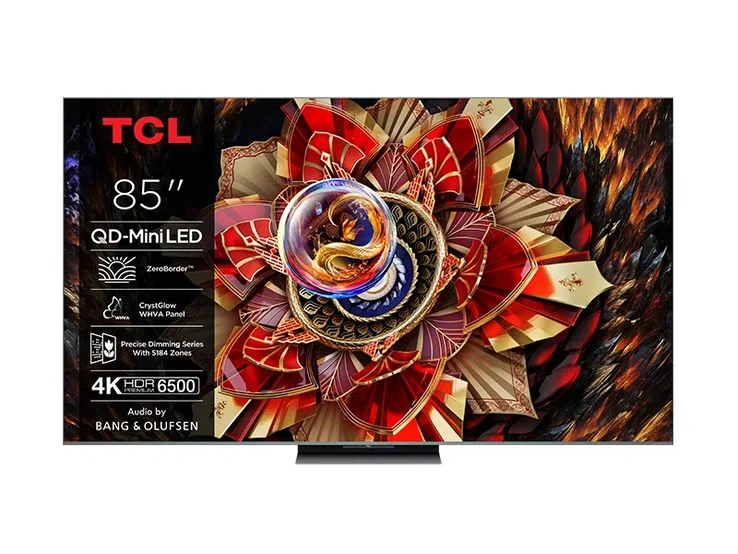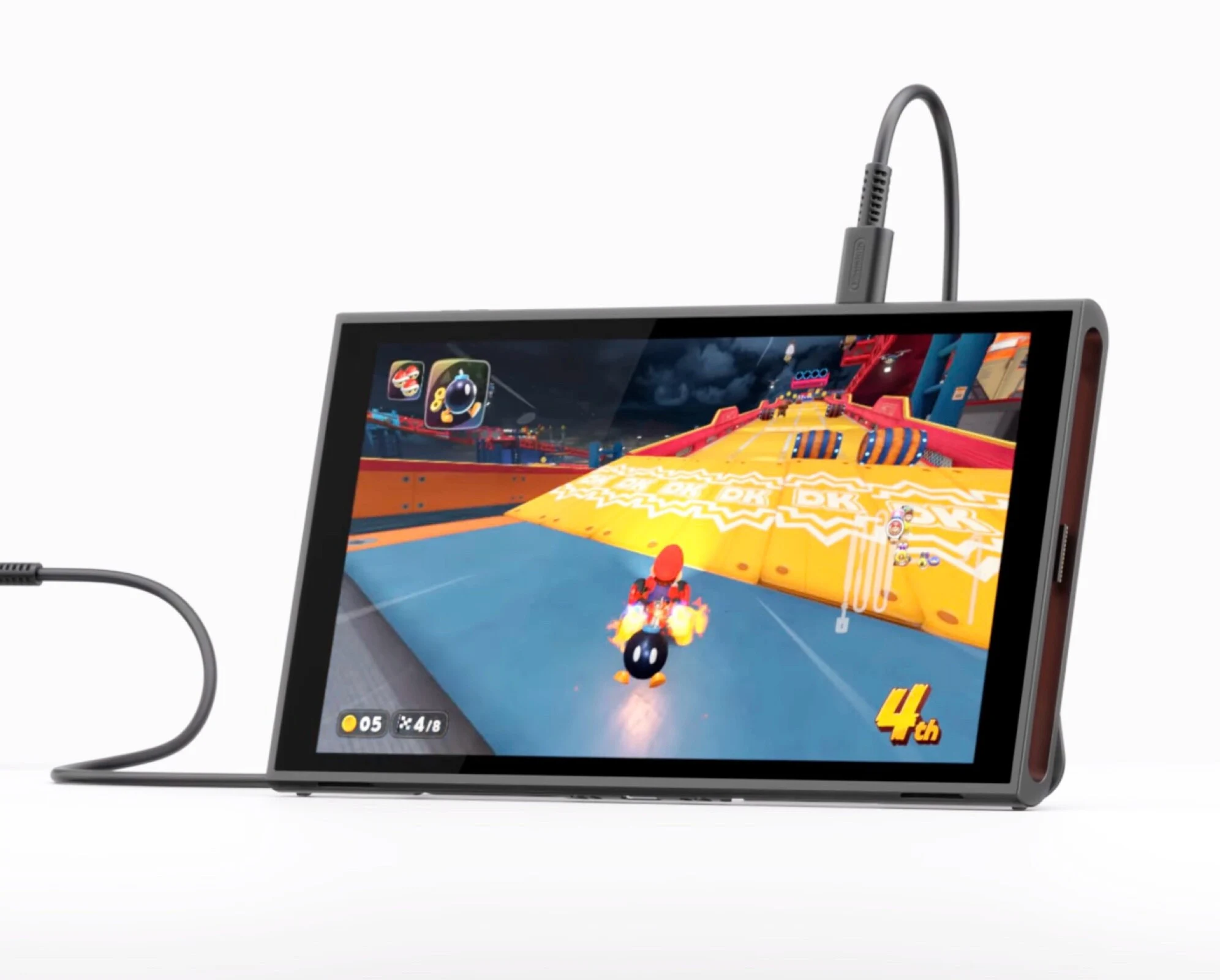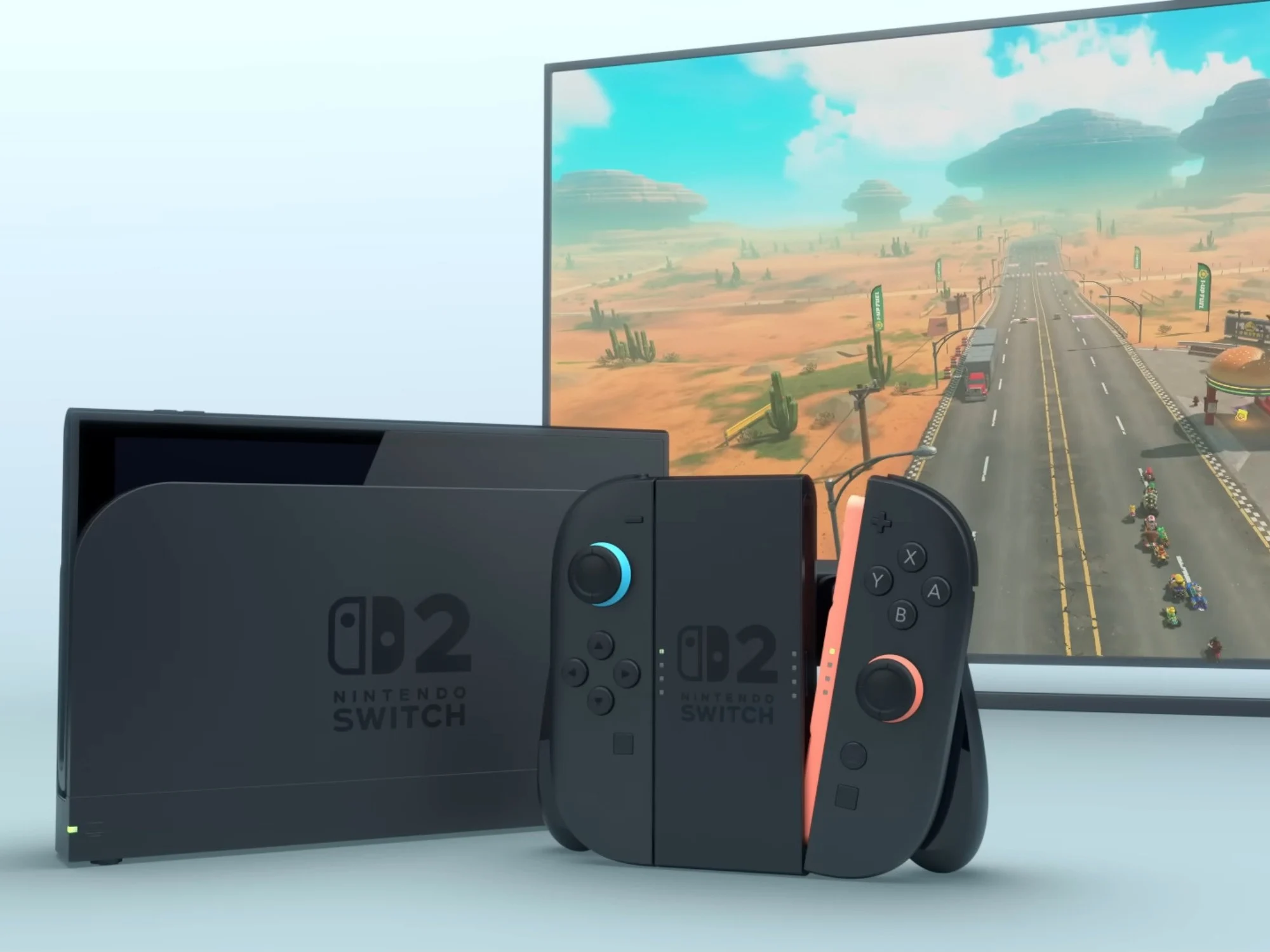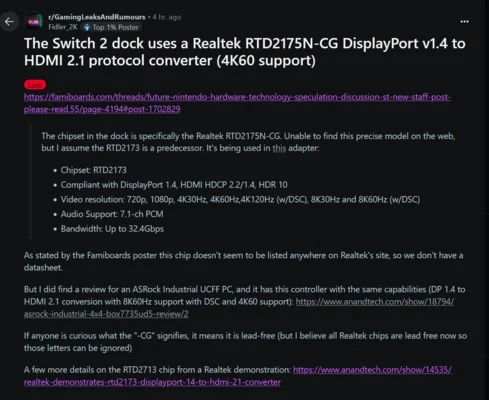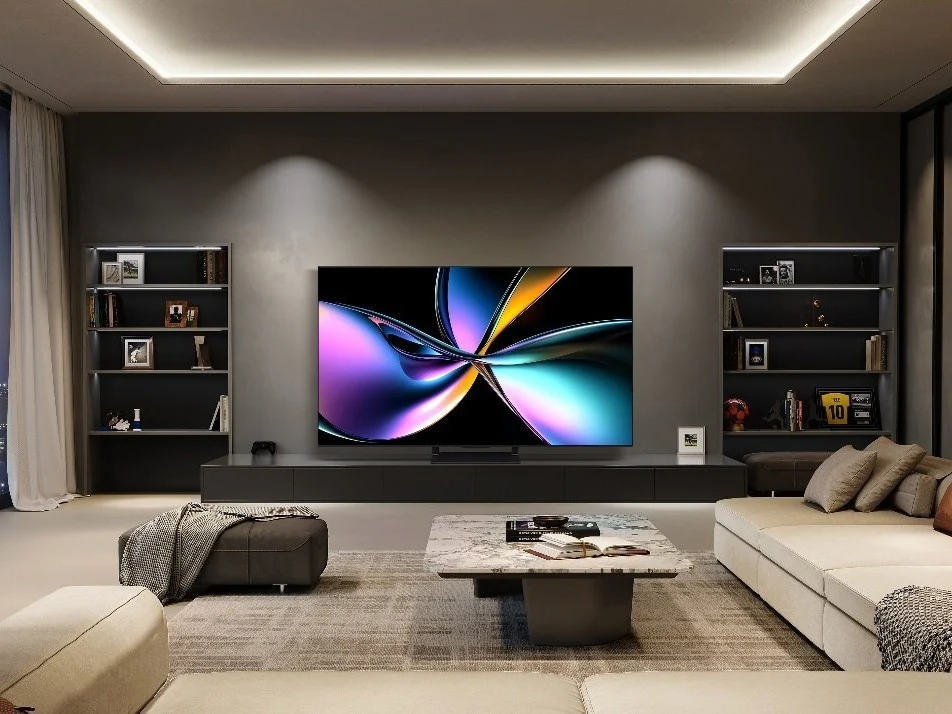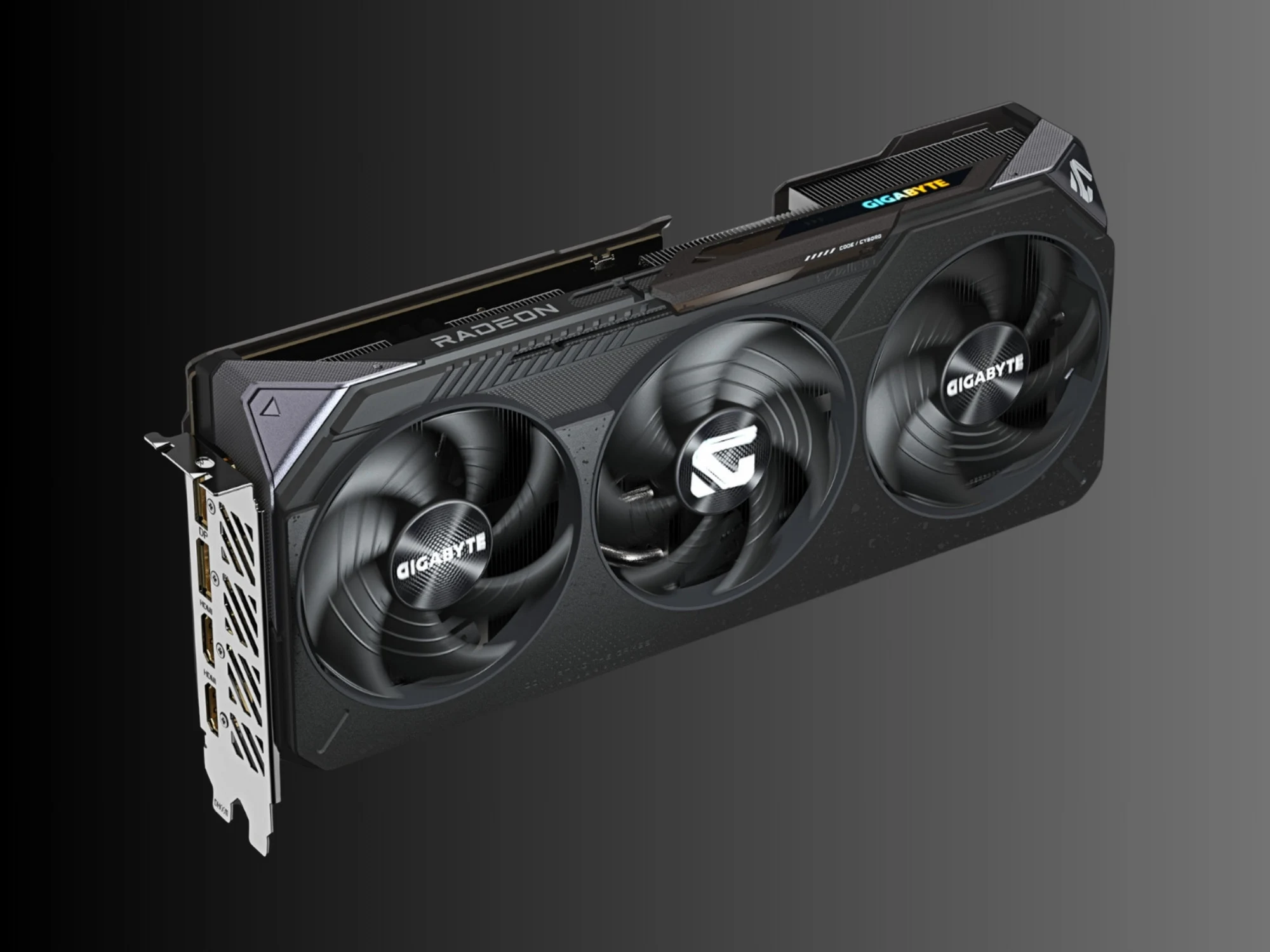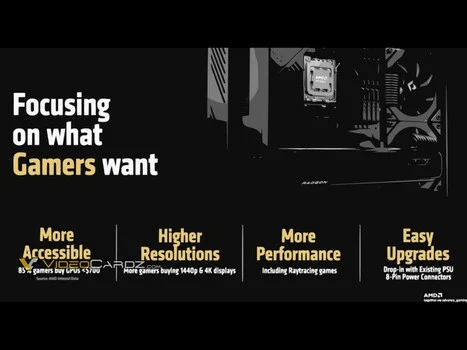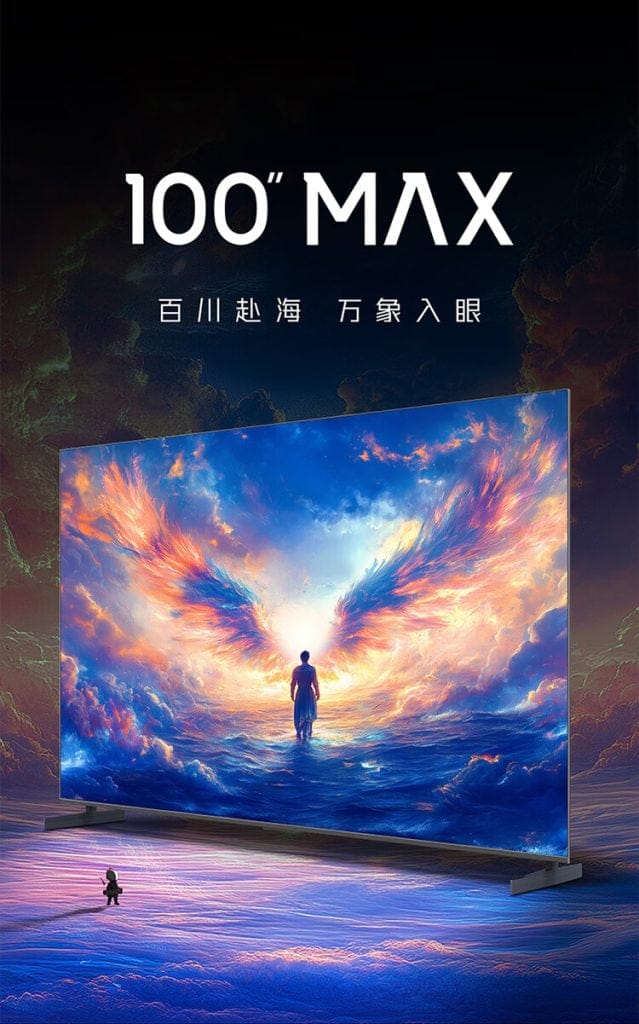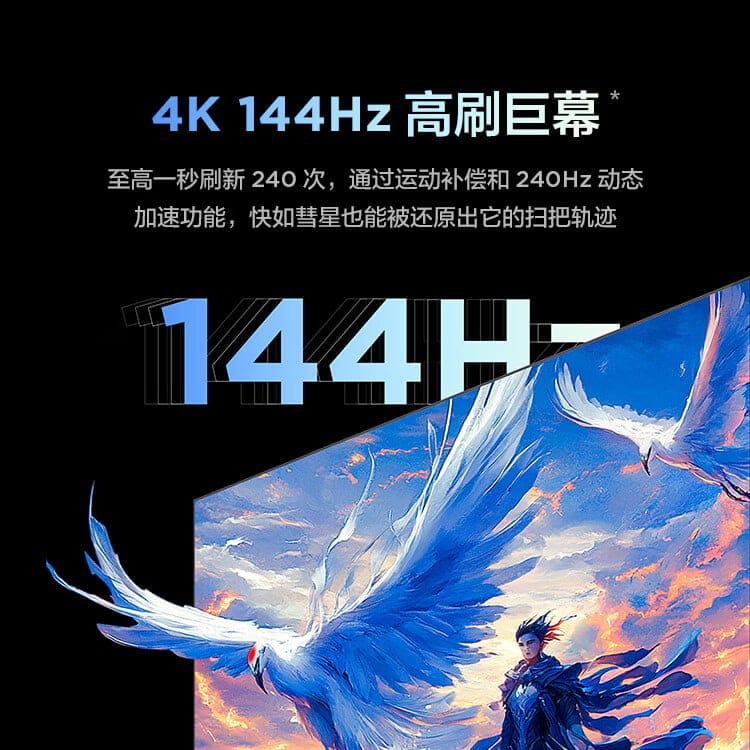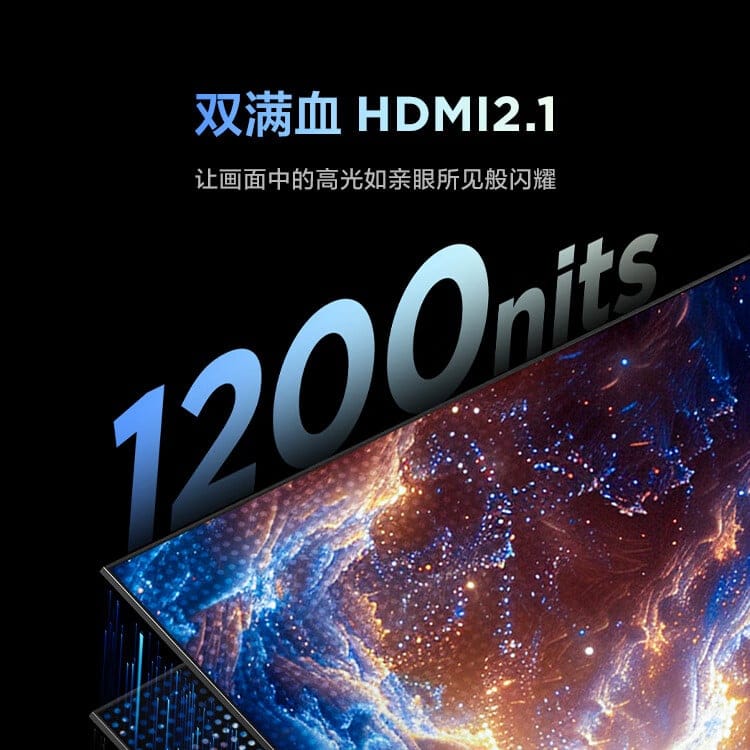Key Takeaways
1. The TCL Q8C Premium QD MiniLED TV is now available in various European countries and is similar to previous models like the C8K, C89K, and C81K.
2. It comes in four sizes: 65-inch, 75-inch, 85-inch, and 98-inch, featuring a WHVA CrystGlow Panel with a native contrast ratio of 7,000:1 and up to 5,000 nits brightness.
3. The TV supports 4K resolution with a native refresh rate of 144Hz and includes gaming features such as Game Accelerator, Game Bar, and AMD FreeSync Premium Pro.
4. It offers various HDR formats, built-in Bang & Olufsen speakers, and connectivity options like HDMI 2.1, USB 3.0, Bluetooth 5.4, and Wi-Fi 6.
5. Pricing starts at €1,499 in France, with discounts available in multiple countries, including Italy (€1,699) and Germany (€1,599 for the 65-inch model).
The TCL Q8C Premium QD MiniLED TV has hit the market in various European nations. This model is basically the same as the C8K, C89K, and C81K TVs, which were introduced in multiple regions back in June 2025. It shares similarities with the QM8K, which was launched in the US earlier this year, starting at $1,798 on Amazon.
Available Sizes
The Q8C is offered in four distinct sizes: 65-inch, 75-inch, 85-inch, and 98-inch. Each TV features a WHVA CrystGlow Panel utilizing QLED technology, boasting a native contrast ratio of 7,000:1. These models cover 97% of the DCI-P3 color spectrum and can reach brightness levels up to 5,000 nits, along with 3,840 local dimming zones.
Gaming Features
With a 4K resolution and a native refresh rate of 144Hz, the Q8C also includes Game Accelerator, which goes up to 288Hz. Additional gaming features consist of Game Bar and AMD FreeSync Premium Pro. The TV supports Dolby Vision IQ, HDR10+, HLG formats, IMAX Enhanced, and Filmmaker Mode. Thanks to the Google TV platform, users can easily access various streaming services and can wirelessly share their screens using Google Cast or Apple AirPlay 2. It also comes with Bluetooth 5.4, Wi-Fi 6, and ports such as HDMI 2.1 (eARC), USB 3.0, and Ethernet. Plus, it includes built-in Bang & Olufsen speakers that are compatible with both Dolby Atmos and DTS Virtual:X.
Pricing and Discounts
LDLC, which services France, Belgium, and Switzerland, has the TCL Q8C Premium QD MiniLED TV starting at €1,499. The 75-inch, 85-inch, and 98-inch versions are currently being offered at discounted prices. In Italy, you can find prices beginning at €1,699 on Amazon. For Germany, the recommended retail price for the 65-inch model is €1,599, with discounts available on all sizes at the retailer Otto. A complete list of suggested retail prices for each size in these countries can be seen in the table below.
Source:
Link



